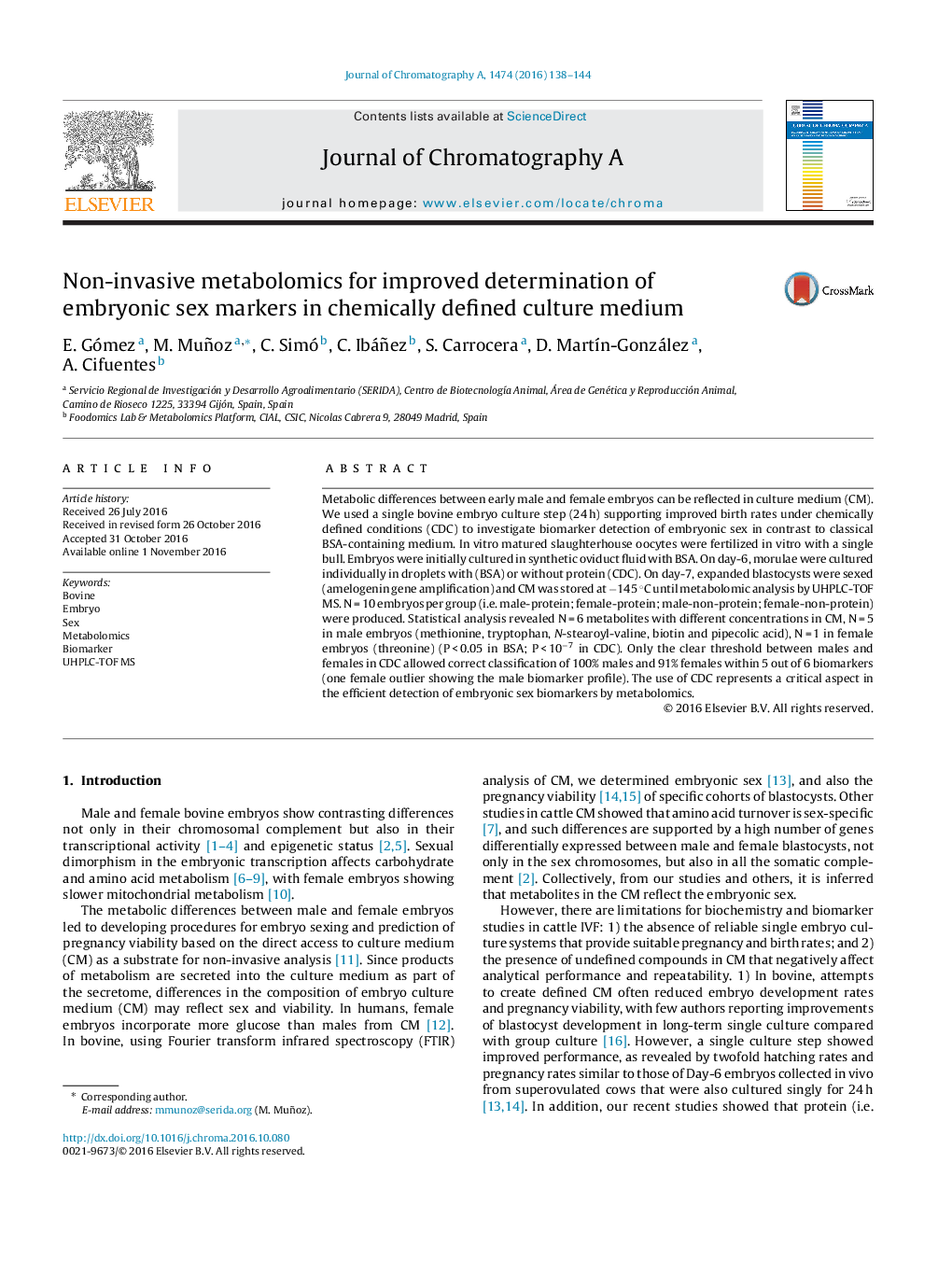| Article ID | Journal | Published Year | Pages | File Type |
|---|---|---|---|---|
| 5135775 | Journal of Chromatography A | 2016 | 7 Pages |
â¢UHPLC-TOF-MS metabolomics discovered new biomarkers for embryonic sex determination.â¢The same biomarkers were found under different culture media.â¢Chemically defined conditions provided uniform analytical responses.
Metabolic differences between early male and female embryos can be reflected in culture medium (CM). We used a single bovine embryo culture step (24 h) supporting improved birth rates under chemically defined conditions (CDC) to investigate biomarker detection of embryonic sex in contrast to classical BSA-containing medium. In vitro matured slaughterhouse oocytes were fertilized in vitro with a single bull. Embryos were initially cultured in synthetic oviduct fluid with BSA. On day-6, morulae were cultured individually in droplets with (BSA) or without protein (CDC). On day-7, expanded blastocysts were sexed (amelogenin gene amplification) and CM was stored at â145 °C until metabolomic analysis by UHPLC-TOF MS. N = 10 embryos per group (i.e. male-protein; female-protein; male-non-protein; female-non-protein) were produced. Statistical analysis revealed N = 6 metabolites with different concentrations in CM, N = 5 in male embryos (methionine, tryptophan, N-stearoyl-valine, biotin and pipecolic acid), N = 1 in female embryos (threonine) (P < 0.05 in BSA; P < 10â7 in CDC). Only the clear threshold between males and females in CDC allowed correct classification of 100% males and 91% females within 5 out of 6 biomarkers (one female outlier showing the male biomarker profile). The use of CDC represents a critical aspect in the efficient detection of embryonic sex biomarkers by metabolomics.
